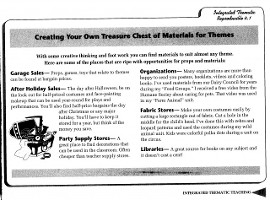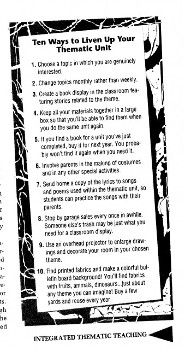September: The Circus
(Colors, Shapes, Letters & Numbers)
Beg: red, blue, pink, gray
Med: orange, yellow, green
High: white, black, brown, purple
Sight Words: The, is
October: Farm Animals
(Holiday theme: Halloween)
Beg: cat, dog, pig, hen, cow, hog
Med: sheep, barn, farm, bull, frog, duck
High: horse, chicken, turkey, farmer
Sight words: I, can, see, a, my, me, not
cat: bat, fat, hat, mat, pat, rat, sat
dog: fog, frog, hog, jog, log
pig: big, dig, fig, wig
hen: den, men, pen, ten
cow: how, now
can: fan, man, pan, ran, tan, van
sheep: beep, cheep, deep, keep, peep, sleep, weep
duck: buck, cluck, luck, suck, truck
November: Fruit & Vegetables
(Holiday theme: Thanksgiving)
Beg: eat, food, corn, apple, orange, banana, tomato, potato
Med: grape, pear, pumpkin, mushroom, cherry, fruit
High: carrot, watermelon, pineapple, strawberry, vegetable
Sight words: like, with, go, no, at, up, if, in, on, we, of, as, or, to, do, did
corn: born, horn, torn
grape: drape, tape
pear: bear, tear
cherry: berry, merry
my: by, fly, try
me: be, he
like: bike, hike, mike, trike
go: no, so
December: Home & Shopping
(Holiday theme: Christmas)
Beg: home, mom, dad, sister, brother
Med: door, window, floor, yard, room, bedroom, bathroom
High: garage, closet, hallway, stairs
Sight words: has, have, he, she, it, her, him, his, you, your
January: OPEN
(Holiday theme: New Year: calendar)
Beg: depends on theme
Med: depends on theme
High: depends on theme
Sight words: this, that, these, those, where, when, what, who, how
February: Transportation
(Holiday theme: Valentine's Day, Presidents)
Beg: car, bike, cab, sub, ship, sled, bus, van, gas, jet, tram
Med: train, horse, taxi, boat, blimp, skates, drive, truck, subway
High: motorcycle, hot air balloon, airplane, submarine
Sight words: down, little, could, would, after, long, come, some, over
car: bar, far, jar, star, tar
bike: hike, like, mike, pike
cab: dab, gab, jab, lab, nab, tab
sub: cub, hub, rub, tub
ship: dip, flip, hip, lip, nip, rip, sip, tip
sled: bed, fed, led, red, wed
|
March: Careers
(Holiday theme: St. Patrick's Day)
Beg:
Med:
High:
Sight words: just, very, which, many, there, are, time, than
April: Wild Animals
(Holiday theme: Easter)
Beg: cub, lion, fox, fish, owl, snake
Med: tiger, rabbit, bear, zebra
High: elephant, monkey, gorilla, giraffe
Sight words: was, were, about, said, most, find, out, then
fish: dish, wish
snake: bake, cake, fake, lake, make, rake, take, wake
bear: pear, tear, wear
May: Insects
(Holiday theme: Mother's Day)
Beg: bug, fly, moth, bee, ant, worm, spider, snail
Med: butterfly, ladybug, grasshopper, dragonfly
High: wasp, caterpillar, praying mantis, beetle
Sight words: words, first, been, make, made, look, use
June: The Ocean
(Holiday theme: Summer)
Beg: shell, fish, sea, shark, eel, sea star, seal, crab, lobster
Med: sea lion, sea horse, swordfish, sea turtle, stingray
High: dolphin, whale, walrus, octopus
Sight words: review all 100
 Integrated Teaching Teaching ideas Integrated Teaching Teaching ideas
This chart, page 57 in Integrated Thematic Teaching (published by NEA), contains some ideas on where to find materials for your themes.

Integrated Thematic Teaching Top Ten
Ten quick ways to liven up your thematic unit. Taken from page 51 of Integrated Thematic Teaching (written by Dwayne Douglas Kohn, published by the National Education Association - NEA)
|